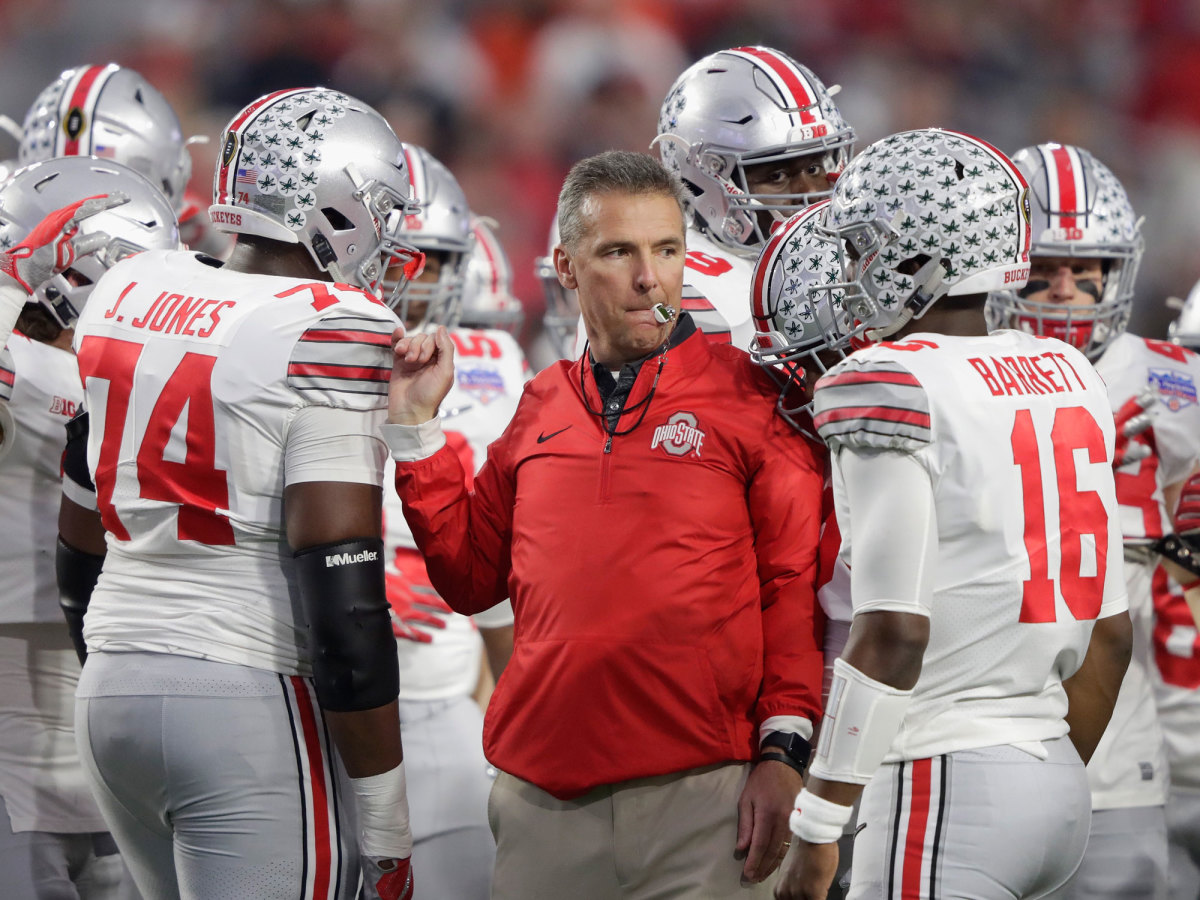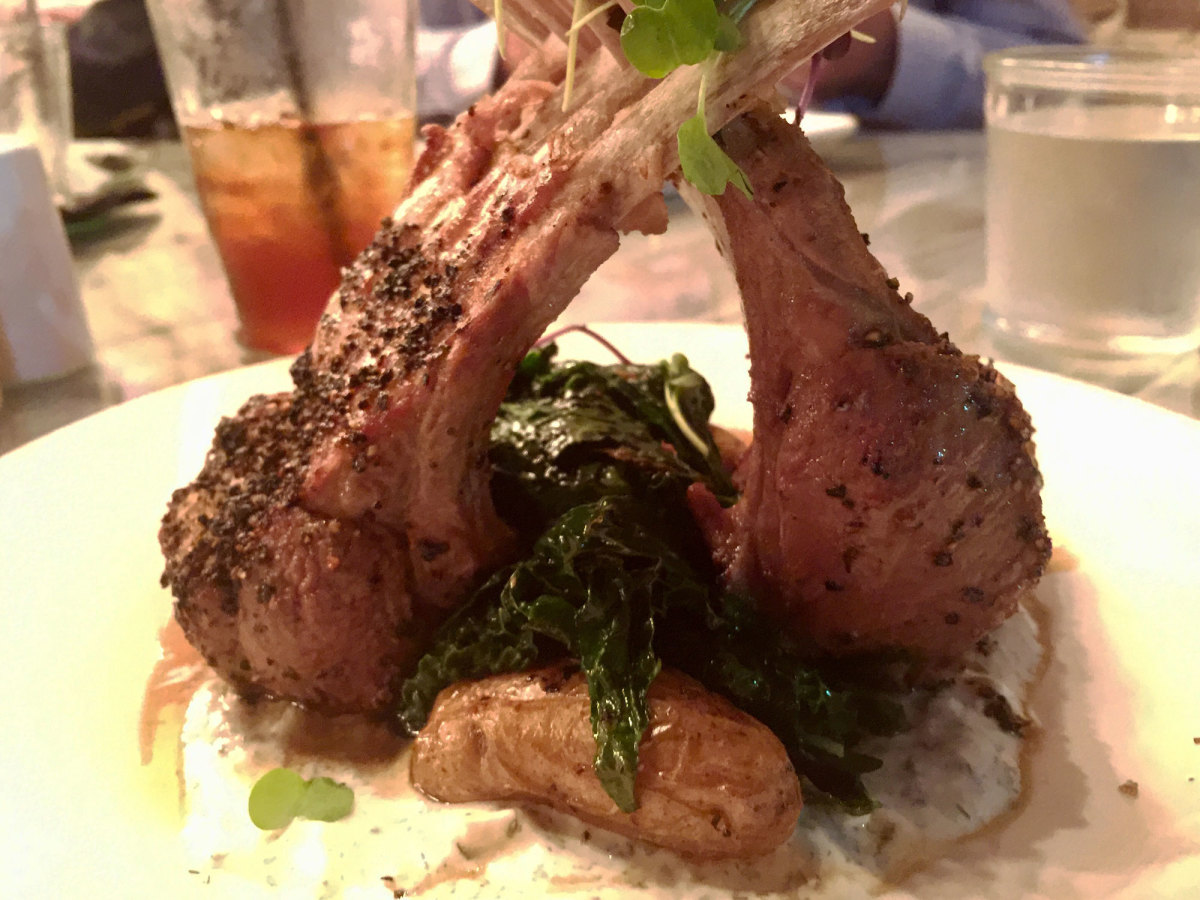How do you sign the perfect recruiting class? Find players who fit into the program's culture

Dennis Hickey spent 20 years helping NFL teams craft their rosters. So in his first season in his adult life without a team, Hickey decided to examine how college teams build their rosters. What he found could be quite educational as teams prepare to put one recruiting class to bed on Wednesday and then dive headlong into the next.
Hickey started in the NFL as a scout. Later, he ran the personnel department for the Buccaneers and served as Dolphins’ general manager for the 2014 and ’15 seasons. After getting fired by the Dolphins in January ’16, Hickey began exploring the player-personnel side of the college game. Several former co-workers—Minnesota head coach P.J. Fleck coached receivers in Tampa, and Ohio State defensive coordinator Greg Schiano was the Bucs’ head coach—and several friends work in college, and Hickey was curious as to exactly how different the process was between college and the pros.
Hickey scoured signing classes and rosters looking for patterns. He also picked the brains of his friends in the college game. Ultimately, Hickey identified five key components to the college player selection process: identification, evaluation, recruiting, development and utilization. Four of those are analogous to factors in the NFL selection process. The only one that isn’t is recruiting, and for obvious reasons. NFL teams draft players; college coaches must make players choose their programs.
What Hickey found was that many staffs focus on the selling aspect at the expense of evaluation. “What I didn’t see is much of the resources and attention given to the other parts,” Hickey said. “Are we recruiting the right guy? Is the recruit who we think he is? Then how do we develop him and utilize him in a way that maximizes his talent?”
Hickey acknowledges there are unique challenges in the college game that NFL front offices don’t face. The rules governing contact between college programs and high school players are far more strict than the ones governing contact between NFL teams and potential draftees. Also, college teams typically sign between 20 and 25 players a year. NFL teams draft between five and 10. And Hickey also acknowledges that selling is a critical part of the college process, but he believes if staffs took a more analytical approach to evaluation and took more steps to ensure players fit into the program’s culture, they could increase their hit rate by 10–20%. That may sound small, but a 20% improvement means four to five more potential starters per class. That could raise a program from middling to a contender for conference titles.
Eight of the most famous flips in National Signing Day history
Perhaps the best way to explain is to show how some of the best recruiting programs in the country already use versions of what Hickey is recommending.
One of Hickey’s key points is that coaches can make their lives easier by recruiting the players who best fit their program’s culture. Who does that better than anyone right now? The reigning national champion Clemson Tigers.
Not counting players who turned pro early, only seven Clemson signees from 2013–16 weren’t still on the roster in 2016. That’s an astounding hit rate in an age when losing five-to-seven scholarship players an off-season is the industry standard. “The retention,” Hickey said, “speaks to the culture meshing with the recruiting.”
Clemson coach Dabo Swinney understands who he is and who fits into the program. Meanwhile, Swinney’s nine assistants during that time understood their boss and what he wanted. Receivers coach and co-offensive coordinator Jeff Scott started his Clemson career as receivers coach Swinney’s graduate assistant, and Scott served as the Tigers’ recruiting coordinator from the moment Swinney was elevated to head coach in ’08 through the ’14 season. Defensive line coach Dan Brooks and tight ends coach Danny Pearman were among Swinney’s first hires when Clemson pulled the interim tag in December ’08. Brad Scott, Clemson’s assistant athletic director in charge of football player development, essentially serves as the Tigers’ GM. Aside from being Jeff’s father and a former college head coach (South Carolina), the elder Scott—who landed Deion Sanders as a Florida State assistant—helped teach a young Swinney how to recruit when Brad was the Tigers’ offensive line coach and Swinney coached receivers under Tommy Bowden.
Clemson’s dilemma now is continuing that recruiting success after losing assistants. Brooks just retired, and defensive ends coach Marion Hobby just left for the Jacksonville Jaguars. So now Swinney must teach new assistants Todd Bates and Mickey Conn how the Tigers recruit. That shouldn’t be too difficult for Conn, a former Georgia high school coach who spent the past year as a defensive analyst for the Tigers.
That move is straight out of the playbook of Alabama coach Nick Saban, who has a deep bench of analysts that allows him to plug in new assistants who start the job already attuned to the wants of the head coach and to the culture of the program. Few programs have potential assistants sitting at the ready, though. Those might consider what Ohio State’s Urban Meyer has done. In 2014, Meyer brought in business consultant Tim Kight to teach the culture Meyer desired to the Buckeyes’ assistants. Meyer had noticed that when he had staff turnover at Florida, the program hadn’t run as smoothly. Kight had convinced Meyer to codify the culture and teach it so that any new staffer could understand exactly what worked within the program. Meyer has faced more staff churn at Ohio State than he did at Florida, but the Buckeyes’ record hasn’t dipped. Wednesday, Ohio State will haul in what could be one of the best pound-for-pound recruiting classes of the star-ranking era.

Hickey also would like to see colleges take a more analytical approach to their recruiting. This is an area where the money to hire an NFL-style player-personnel operation like Alabama’s is extremely helpful, but it isn’t completely necessary. Hickey believes that if a head coach can create a series of numerical grading scales and then teach all his assistants to use it consistently, it could help normalize the evaluation process for a program. That way, one assistant’s gut feeling wouldn’t necessarily override the rest of the staff’s eyes. (This isn’t to say gut feelings can’t be useful. Ohio State fans thank former assistant Luke Fickell’s gut frequently for linebacker Darron Lee. But cold analysis tends to work better in the aggregate.)
While Alabama, which is poised to land yet another top-ranked class, does have the largest recruiting infrastructure in college football, its evaluation process is based on an analytical format that even a poorly resourced program could copy. It’s Saban’s system for evaluating “critical factors” for each position, and while it has evolved into something more complex, it began as an easy way for members of the late Don James’ Kent State staff to predict how soon a recruit might be able to contribute on the field. Saban, who played for James, picked up the system as a graduate assistant. A prospect is graded on each factor—this could be a physical characteristic such as height or a playing characteristic such as man-to-man coverage skill—as the coaches try to determine who is the best fit for the schemes the team runs. The coaches also grade prospects on attitude and intelligence. In a 2012 interview, James explained why he created his system. “We were looking for guys who could start right away,” James said. “We weren't sure we were going to be around for two or three years.”
James responded appropriately to that pressure. Some coaches don’t. Some hire the best salesmen they can and try to collect as much talent as possible. But if those players don’t fit what the program does best, they don’t have the success of Saban or Meyer or Swinney. So perhaps more coaches should do what Hickey did and perform a global examination of their recruiting operations. They may find they could stand to make some changes that could keep them employed quite a bit longer.
A random ranking
Two of the items in this week’s First and 10 involve Matthew McConaughey, so it seems like an appropriate time to rank McConaughey’s top five roles.
1. Wooderson in Dazed and Confused
Here are the first words McConaughey uttered on the big screen.
2. Ron Woodroof in Dallas Buyers Club
He won the Oscar for this one. Still not better than Wooderson.
3. Rust Cohle in True Detective
Time is a flat circle, baby.
4. Mark Hanna in The Wolf of Wall Street
Just as in Dazed and Confused, he steals the movie with only a few minutes of screen time.
5. Ben Barry in How to Lose a Guy in 10 Days
The man made approximately $3 billion* on romantic comedies. It’s only fair that one from this period of his career appears on this list. (Also, this one is shockingly rewatchable.)
*Estimated
First-and-10
1. Two more federal lawsuits were filed against Baylor last week.The first was brought by a former Baylor financial aid officer who alleges she was improperly fired as retaliation for reinstating the scholarship of a junior college transfer who had been accused of sexual assault. The second is more similar to the others filed in the wake of the sexual assault scandal that resulted in the firing of football coach Art Briles and the eventual departures of president Ken Starr and athletic director Ian McCaw. The suit, filed by Colorado-based attorney John Clune, is on behalf of a woman who accused two players of sexual assault and claims that Baylor coaches encouraged members of Baylor’s hostess group to engage in sexual acts with players and recruits. ESPN’s Paula Lavigne and Mark Schlabach quoted a former Briles staff member who said there is “no damn way” Baylor coaches did the things alleged in the suit.
Breaking down Friday’s new Baylor sexual assault lawsuit
2. Brent Musburger will call his final game this week when Georgia faces Kentucky in basketball on ESPN. Musburger, 77, spent the past two football seasons calling games on ESPN’s SEC Network. Musburger’s career spanned six decades. He started as a sportswriter and moved to the radio in the late 1960s. In 1975, Musburger began hosting The NFL Today on CBS. That’s where he first said “You are looking live.” Musburger became the lead play-by-play man at CBS until 1990, when he moved to ESPN.
Here are some of Musburger’s greatest hits.
3. Billy Napier didn’t get the Alabama offensive coordinator job, but it appears will be running an offense next season. Napier, who has served as Alabama’s receivers coach since 2013, has been hired to run the offense at Arizona State, Fox Sports and USA Today reported this weekend. Napier will replace Chip Lindsey, who was hired last week to run Auburn’s offense.
Napier was one of the first veteran coaches to use one of Alabama’s analyst positions to rehab his career. He was Dabo Swinney’s first offensive coordinator at Clemson but got fired after the 2010 season. Napier spent the 2011 season as an analyst in Tuscaloosa before going to Colorado State with Jim McElwain to coach quarterbacks. Napier was a candidate in December to replace Lane Kiffin as Alabama’s coordinator, but Crimson Tide coach Nick Saban chose Steve Sarkisian.
4. Jacksonville State-bound offensive lineman Ye’Majesty Sanders commands you to read Gabriel Baumgaertner’s all-name team for the class of 2017.
5. Matthew McConaughey told the Austin American-Statesman that he kept it in the Big 12 when he crafted the look for his portrayal of prospector Kenny Wells in Gold, which opened Friday.
“You know where it really came from? I haven’t told anyone else this,” McConaughey told reporter Joe Gross. “I went to the hair lady, said, ‘It’s this guy’s hair,’ and handed her a picture of Dana Holgorsen.”
So how close did she get? Judge for yourself.
See Matthew McConaughey as Kenny Wells in @GoldTheMovie, now playing! https://t.co/vvqzKNPhjp pic.twitter.com/cQOPfaDi06
— Embassy Cinema (@EmbassyCinema) January 27, 2017
#BearBryantAward finalist Dana Holgorsen. pic.twitter.com/vQXierAQ7H
— Dave Goren (@Dave_Goren) January 12, 2017
6. Holgorsen was impressed.
😂 @McConaughey happy to help! You nailed the look - It's not easy... 👍🏼 #GOLD #wvurecruiting
— Dana Holgorsen (@Holgorsendana) January 26, 2017
7. In other Big 12 news, Boomer Sooner took on a new meaning for one of Oklahoma’s many league championship trophies.
Bad News: The Big 12 Championship Trophy was broken today.
— Lincoln Riley (@LincolnRiley) January 28, 2017
Good News: We have 9 others.#BoomerSooner pic.twitter.com/TeXnur0RTn
8. Former Texas A&M defensive end Myles Garrett offered a heartfelt thank you to the Aggies in The Players Tribune. He saved some of his highest praise for Fuego Tortilla Grill. If you read this space regularly, you know I wish there was a Fuego next to every college campus. Garrett would like to expand beyond that. “Those tacos were always there for me when I needed them most,” Garrett wrote. “Wherever I end up next, I will do whatever I can to make sure that Fuego opens a franchise in that city. This is something that is very important to me.”
It’s great that our future millionaires are adopting worthy causes.
9. The new quarterbacks coach at Notre Dame is awfully familiar with playing the position in South Bend. Tommy Rees, who played for the Irish from 2010-13, has been hired to Brian Kelly’s staff. Except now he’s going by Tom.
10. Michigan coach Jim Harbaugh tried to cross a busy road near dark at age 6 and was hit by a truck. Last week, he met the driver of that truck while recruiting in Iowa.
With Dan McGivern of Iowa City. Driver, when I ran into traffic & took on his car @ age 6 #LifeSaver #DefiningMoment pic.twitter.com/UOM055euuY
— Coach Harbaugh (@CoachJim4UM) January 26, 2017
The driver, Dan McGivern, now sells life insurance. Harbaugh made sure to give him a plug on Twitter.
For comprehensive Life Insurance coverage, call Dan McGivern at 319-351-4307 pic.twitter.com/m0d0Af1TpQ
— Coach Harbaugh (@CoachJim4UM) January 26, 2017
What's Eating Andy
Since it appears I’ll never achieve my dream of having Morgan Freeman narrate a day of my life—he says “Andy” so beautifully—perhaps I need to refocus. Maybe Gus Johnson would be game. Just imagine the drama he could add to picking up the kids from school or finding a buy-one-get-one-free deal on yogurt.
VILLANOVA AT THE BUZZER! Donte DiVincenzo with the tip-in!
— FOX Sports (@FOXSports) January 29, 2017
COUNT IT! No.1 @NovaMBB defeats No.12 Virginia 61-59 https://t.co/iJZ3fAw6Da
What's Andy Eating
It still mystifies me as to how the Brussels sprout became the butt of every vegetable-related sitcom joke for the better part of three decades. While the preparations have become more plentiful, they had ovens back in the 1960s. Someone could have tossed some sprouts on a baking sheet with salt, pepper and a drizzle of oil and blown up the notion of a universally reviled veggie.
Of course, if the recipe and ingredients for the Brussels sprouts appetizer at Dumbwaiter had existed 50 years ago, we’d have been subjected to years of eggplant jokes instead. Rarely do I recommend an eatery based on one appetizer—the chicken fried bacon at Sodolak’s Country Inn in Snook, Texas, is a notable exception—but if Dumbwaiter only made its New South Brussels sprouts, I’d still tell everyone heading to Mobile, Ala., to visit.

It helps that everything else I tried there was excellent, but the sprouts alone would bring me back. Like many of the sprout dishes that now dot menus across the country, they’re cooked in vinegar. In this case, it’s a honey balsamic vinaigrette. And just like most of the others, these sprouts share space in the pan with small, thick chunks of bacon. In this case, it’s bacon confit made with Bill E’s Small Batch Bacon from nearby Fairhope, Ala. But even though this recipe shares DNA with every sprout recipe at every gastropub in America, something makes the taste of this dish float on the tongue for days afterward.
Perhaps it’s the fact that this particular bacon gets serenaded as it gets cured. (No. Really.) Maybe it’s the blend of this particular bacon fat with this particular type of vinaigrette. Maybe it’s the hint of shaved red onion. But something makes these sprouts different. Similarly prepared versions in other places are tasty. This one made me want to lick the bowl clean. I would have done it with no shame had the baked oysters not arrived when they did. Judging by the way other diners were eyeballing their sprouts as they were passed around tables, I wasn’t alone.

Those baked oysters, crusted with artichoke and spinach and meant to be eaten off a hunk of crusty bread, calmed the sprout craving. I momentarily forgot about the sprouts when I saw a sextet of lamb chops arranged like the Faraglioni just off Capri. I typically avoid lamb chops at restaurants because they require an awful lot of work for very little meat at a fairly high price. But these were thick and juicy and a perfect medium rare, and I felt quite full when I laid down my knife.

Unfortunately, later that night, the cravings came. I want more of those sprouts. I want them for breakfast, lunch and dinner. And I’m going to dream about them until I taste them again.
